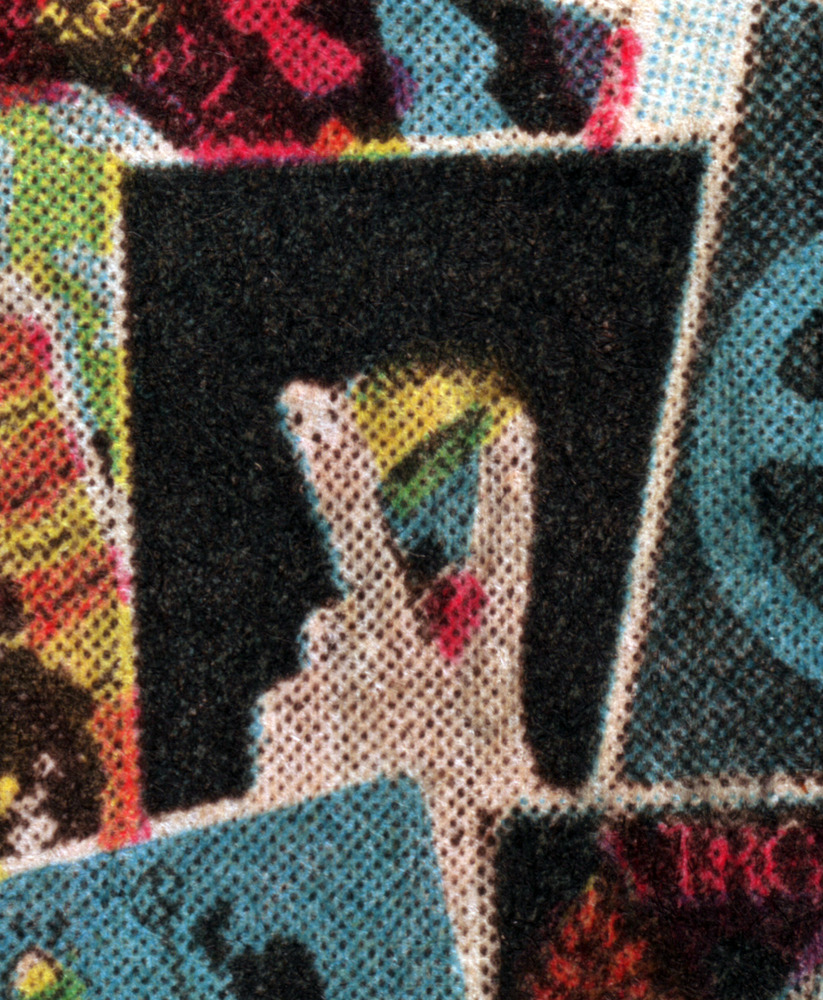The US Postal System is Near Collapse – Business Week
May 30, 2011
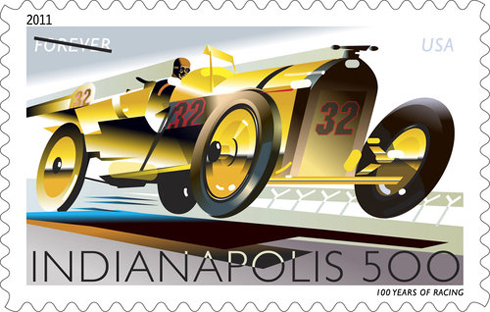 If you want to understand the crisis in the US postal system, you need to read this article in Business Week. I hope that steps are taken to avoid this reaching a crisis in 2011. The easiest one, in my view, is eliminating Saturday delivery. I’ve advocated that position for years, if only to my local mail carrier. They could also try serving cocktails at the post office. . .this would make the long lines easier to bear, especially in the summertime. Just a thought.
If you want to understand the crisis in the US postal system, you need to read this article in Business Week. I hope that steps are taken to avoid this reaching a crisis in 2011. The easiest one, in my view, is eliminating Saturday delivery. I’ve advocated that position for years, if only to my local mail carrier. They could also try serving cocktails at the post office. . .this would make the long lines easier to bear, especially in the summertime. Just a thought.
Free Photoshop brushes – Smoke Effects
May 30, 2011

There are 33 sets of excellent Photoshop smoke effect brushes collected here on the YouTheDesigner web site, all free and available in various downloadable formats. If you need smoke effects for a design project, I’m sure you can find what you’re looking for in this great collection.

Shi Jindian’s Incredible Steel Wire Sculptures
May 30, 2011
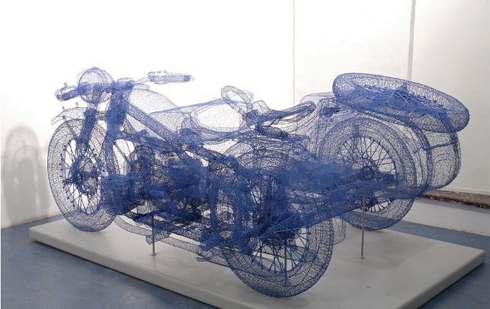
They have the appearance of CAD wire frame drawings but these are actually three dimensional steel wire sculptures by the artist Shi Jindian. Go here to see more of these amazing works at VisualNews.com.
“The Girl with the Dragon Tattoo” – trailer & poster
May 30, 2011
In 2009, like much of the rest of the world, I got hooked on Stieg Larsson’s The Girl with the Dragon Tattoo trilogy; devoured the books and saw all three of the Swedish film adaptations. Noomi Rapace was the living incarnation of Lisbeth Salander, it’s hard for me to imagine anyone topping her performance.
Now Hollywood will weigh in with their version of the first book directed by David Fincher and starring Daniel Craig, lately of James Bond fame and Rooney Mara (The Social Network, A Nightmare on Elm Street 2010).
This $100 million dollar film from Columbia Pictures is being billed as “The Feel Bad Movie of Christmas 2011” – a great tag line, IMO. Nice use of Led Zeppelin’s Immigrant Song in the trailer, too. A phrase from the lyric of this song has become vividly identified with the band: “The hammer of the gods/ Will drive our ships to new lands.”
By definition these days most trailers are superior to the films they are selling but I hope with all the talent and money involved – and the surefire nature of the source material – this film version will be both a hit and a good movie. If it is neither, it will at least goose sales of the books. . .
[ Below the video is the NSFW black & white poster featuring Daniel Craig and a very exposed Rooney Mara. ]
Also, if you’re already read the Tattoo trilogy and are jonesing for more top-notch Swedish crime-thriller fiction I highly recommend the works of Henning Mankell and Jo Nesbø.
Click on image for larger size

“The Information: A Theory, A History, A Flood” by James Gleick
May 15, 2011
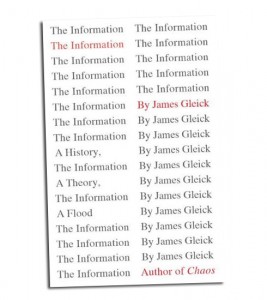 The Information: A Theory, A History, A Flood the new book by James Gleick, author of Chaos, Genius and Isaac Newton is 2/3 of an amazing work. The theory and the history are there in great and compelling detail but the flood? A mere 26 pages at the end of this 426 page book.
The Information: A Theory, A History, A Flood the new book by James Gleick, author of Chaos, Genius and Isaac Newton is 2/3 of an amazing work. The theory and the history are there in great and compelling detail but the flood? A mere 26 pages at the end of this 426 page book.
From African talking drums and the need for redundancy in their messages to Charles Babbage (the Difference Engine), Ada Byron (the world’s first programmer?) and Claude Shannon (who created the field of information theory with his 1948 article A Mathematical Theory of Communication) Gleick covers this territory thoroughly and, as is his particular gift, makes engineering, hard science and intellectual striving as clear and exciting as Spielberg does an Indiana Jones action sequence. But all of this is the background to today’s networked world of instant communication (if not always information).
I closed the book wishing for more. I’d like Gleick to guide me through the current flood, analyzing it and pointing the way, perhaps, to future trends and coping strategies. Despite this, I’d highly recommend this book to anyone with even a passing interest in learning how we got to where we are today, clicking and tapping and swiping our lives away staying current and connected. Gleick gains bonus points from me personally for name-checking one of my heroes, Richard Dawkins and offering a solid explanation of a meme.
However, I’m pleased that even someone so knowledgeable as Gleick shows his own limits. On page 230 he refers to Pickup on Noon Street as a Raymond Chandler novel. Of course, we Chandlerites know this is a mistake, there is no novel in the canon by that name. It’s a short story.
There’s a collection of 4 stories published under that title, but that packaging does not make a new Chandler novel, as fervently as we might wish it. Shocking that a major book published by Random House would allow this small mistake to pass through the editing process. It seems to be true then, that no one “reads” anymore, not even copy editors at the world’s largest English language trade publisher.
Four Color Process – Adventures Deep Inside the Comic Book
May 11, 2011
Click image for larger size.
John Hilgart’s Four Color Process gallery at Posterous accurately lives up to its sub-head, “Adventures Deep Inside the Comic Book.” You’ll find a year’s worth of posts that feature close-up scans of sections of comic book panels. They vary from the recognizable to the abstract. One feature in common is that they all feature a visible dot pattern from the four color printing process.
The idea was akin to Pointillism in painting. Use patterns of dots in four colors (Cyan, Magenta, Yellow & Black) that combined to create a multitude of colors. If not the 16 million colors of computer screens today, the resulting combinations worked, if somewhat garishly and imprecisely.
As the Hearst papers claimed in 1896, “Eight Pages of Iridescent Polychromous Effulgence That Makes The Rainbow Look Like A Lead Pipe!”
Registration errors abound where the printed color of the object spills over the black holding lines of the artist’s inking job. I remember having a fair tolerance for these slips when I was reading 12 cent comic books on pulp paper.
Some of Hilgart’s selections exist in the visual area where images break down into pattern. (Hey, it worked when Roy Lichtenstein swiped from Joe Kubert and hung the result in Leo Castelli’s gallery.) Click image for larger size.
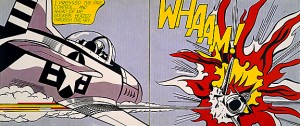 Improved printing processes, digital work flows and better paper stock have made this earlier comic book work appear somewhat crude. But the distinctive look of four color printing on pulp stock is also one of it’s charms. It helps set the image in time.
Improved printing processes, digital work flows and better paper stock have made this earlier comic book work appear somewhat crude. But the distinctive look of four color printing on pulp stock is also one of it’s charms. It helps set the image in time.
For about a century this four color process was used for mass market publications. During their WWII heyday a popular comic book would sell a million or more copies a month. Nowadays a comic book whose sales are measured in tens of thousands is considered a hit.
So please check out 4CP and explore the ‘hidden’ art of the comic book panel.
War Dogs – from Christopher Columbus to Osama Bin Laden
May 8, 2011
 I’m not much of a reader of Foreign Policy magazine but I must say I’m knocked out by Roberta Frankel’s selection of images for her piece War Dogs. See the entire article here.
I’m not much of a reader of Foreign Policy magazine but I must say I’m knocked out by Roberta Frankel’s selection of images for her piece War Dogs. See the entire article here.
We’re on about the subject today because of Cairo, a Belgian Malinois war dog that was used by the Navy SEALS during Operation Neptune Spear, the raid that killed Osama Bin Laden.
Cairo the dog was, of course, named after Peter Lorre’s character in the film of The Maltese Falcon, Joel Cairo. The SEALS are well known to be huge Dashiell Hammett fans, while the Marines have always preferred the hard-boiled poetry of Raymond Chandler. I don’t know what the grunts in the Army read.
But even Elmore Leonard could tell you that shortly after their domestication dogs were put to use as weapons of war. During the Viet Nam War, scout dogs are credited with saving 10,000 troops. Too bad that when we pulled out, these same dogs were classified as ‘surplus material’ and left behind (where their efficiency earned them a bounty from the Viet Cong).
After he sailed the ocean blue Columbus used mastiff-sized dogs to help him conquer the Indigenous Peoples of the Americas. It’s reported that his men would give a native each night to their war dogs to devour as dinner. The Romans had entire units composed of dogs with spiked collars and metal armor. More recently the Russians used 40,000 dogs during WWII in various roles, including anti-tank weapons. The dogs were kept hungry and fed only under Soviet tanks. The first idea was that the dog would release a bomb then return to its handler who would detonate it remotely.
This training program had very mixed results so they decided to kept it simple and stupid. Now there was an 8 inch wooden lever sticking up from the top of the pack the dog was wearing. When the dog went under the chassis of the tank, this lever would strike the bottom of the tank and detonate. But even this didn’t work because to save fuel and ammunition most dogs were trained under parked Soviet tanks without gunfire.
Plus the Soviet tanks were diesel and the German tanks gasoline so the dogs had a tendency to run towards the familiar-smelling Soviet tanks.
And if a dog wasn’t wounded or killed in the battlefield they, of course, ran back to the home front where the explosives destroyed them along with their two-legged co-combatants. So any dog returning would have to be shot by its own troops and some soldiers rebelled against this instance of killing during wartime. Nazi propaganda made much of the desperation that drove the Soviets to this inefficient tactic.
Today’s war dogs are both highly trained mission specialists and expensive tech. They are treated like members of the team, not four-legged bomb delivery systems.

While DC Comics character Sgt. Rock has always maintained that WAR IS HELL (and I believe him), there’s just no place we won’t bring our dogs.
Hubble Space Telescope – Your Tax Dollars at Work
May 8, 2011
Click image for larger size.
Most people know about the Hubble Space Telescope but not the man who is honored by its name. Just as many New Yorkers believe that the Holland Tunnel was a gift of the Dutch to New York City. (It’s actually named after its chief architect, Clifford Milburn Holland). I first read about astronomer Edwin Powell Hubble while reading a biography of Aldous Huxley; they were friends during Huxley’s California years.
Hubble is probably most noted for discovering the ‘red shift’ of light of from distant stars and galaxies, proving they are moving away from us at a constant rate. In 1929 Hubble’s Law proved the universe was expanding and gave us a way to determine its age. In 1931 Hubble was visited by Albert Einstein who thanked him for his discovery. Einstein had previously staked his position out for a static, immobile universe. This puts Hubble into that exceedingly small group of scientists personally thanked by Einstein for correcting him.
The main Hubble site has an incredible archive of images, this link takes you to a subset of particularly beautiful photos.
Everyone complains about their taxes; everyone feels their taxes are too high; everyone believes the government wastes the money that they collect. . .but the Hubble Space Telescope is a project that no one can seriously claim has not been worth the cash spent on it.
Jello Cube Bouncing at 6,200 Frames Per Second
May 5, 2011
This video comes to you courtesy of Modernist Cuisine: The Art and Science of Cooking by Nathan Myhrvold, Chris Young and Maxime Bilet, a six-volume, 2,400 page set that using science-inspired techniques for cooking food.
Designed for serious foodies and scientists with highly developed taste buds, the set retails for a whopping $625! It’s been hailed as “the most important book in culinary arts since Escoffier” by Tim Zagat, who surely knows a thing or two about good eats. Check out their listing on Amazon.com here for more info and a look at some beautiful sample pages.
It highly unlikely that I’ll ever own this set (or adopt its cutting edge cooking techniques). But I’ll always remember them fondly for this high frame rate video of a bouncing Jello cube.
TV Eyes 3D Glasses. Watch regular TV in 3D. Guaranteed! Right. . .
May 4, 2011
“TV Eyes 3D Glasses. Watch regular TV in 3D. Guaranteed!
No 3D movies or special electronics needed. NEW!”
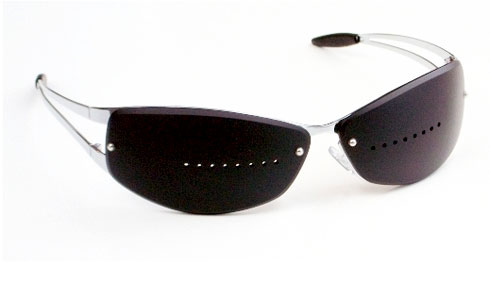
But wait! – these 3D glasses are not stereoscopic 3D, the only kind of 3D that actually exists.
“Caution: This is not stereoscopic 3-D. It will not turn your TV into a hologram. Objects will not jump out of the screen at you. That effect requires special filming techniques that regular movies don’t use.”
This, I feel, is a case where the classic Tom Waits line applies: “The large print giveth and the small print taketh away.”
Note: all text in blue is from the eBay seller of the above item, a $25 pair of 3D glasses that are not, in fact, 3D glasses. They’re something revolutionary and new! When you hear those words, you should know to hold your wallet tightly.
The TV Eyes 3D Glasses are better than the red-blue (or red-cyan) anaglyph process:
“TV Eyes does not use different colored lenses so it has none of the color distorting effects of the old red/blue 3-D glasses. Colors come through clear and vivid.”
It’s not that old, normal 3D 90% of you see every day as you negotiate our tri-dimensional world. It’s an entirely new type of 3D:
“This is an entirely new type of 3D effect that most people have never seen before. It doesn’t look exactly like the 3D you’d see at the theater, because that type of 3D only works on specially filmed 3D movies. TV Eyes 3D works on everything else!”
When you don’t have science supporting your claims, just throw out science. Science is only something we believe because we’re taught it. Education am bad:
“Simple. We don’t rely on stereopsis. There is an assumption that the only way to view a 3-D image is with two eyes and two angles. We’ve been taught this, and we believe. But our eyes see depth and form in many different ways. Stereopsis is only one.”
The ‘new’ discovery is so important we can’t even tell you the name of the process or who developed it (and where and why):
“It was recently discovered that arranging apertures in just the right way created an amazing new optical effect. Normal 2-D images looked more 3-D. TV Eyes glasses are based on this new discovery.”
Oh, it’s not a single process about arranging apertures, it’s a multi-effect engine that combines stuff to make a new, imaginary form of 3D:
“TV Eyes 3-D creates several different optical effects, that when viewed together create a unique new form of 3-D.”
And then let’s toss in a really neat term “atmospheric perspective” and misuse it. Atmospheric or aerial perspective makes distant objects look lighter in color, lower in contrast and (generally) bluer than nearer objects. Not what he said:
“TV Eyes 3-D increases the atmospheric perspective in a picture. This is the sense that ‘air’ or ‘atmosphere’ exists between objects. This sense is what creates the illusion of solid objects placed in an environment.”
A while ago on the New York Stereoscopic Society’s site I had a back-and-forth with an eBay seller offering something similar, glasses with small holes in them designed to give a 3D effect to movies and TV not actually filmed in 3D. You can follow the links below to see how that went.
TV Eyes Glasses: revolutionary new process or tired, old rip-off?
Update on TV Eyes Glasses: Pinholes from Pie Holes? Or Just Another Sonic Transducer?
Second Update on “TV Eyes Glasses” – Pinholes it is!
TV Eyes 3D Glasses: the Manufacturer Responds
TV Eyes 3D Glasses: the Manufacturer Responds Again. . .and We’re Still Not Convinced!!

